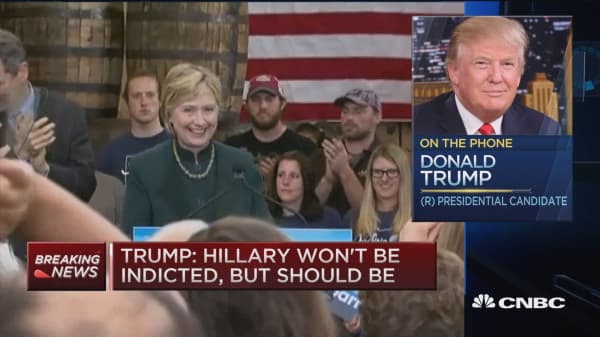It's okay to be confused or overwhelmed by all the things Donald Trump says and all the interviews he gives on TV. But the likely Republican presidential nominee's phone interview this morning on CNBC's Squawk Box included at least two big revelations about how Trump is forming his general election strategy.
The first part of it is not going to be much of a departure from what we've seen so far in the primary campaign. When asked by Squawk anchor Joe Kernen whether he would "tack right or left" for the contest against presumptive Democratic Party nominee Hillary Clinton, Trump responded that he will do neither and stay on the course that is right for the country. Now that's not really different than what any presumptive nominee would say, but in Trump's case it means more because he has been successfully targeting something other than the traditional Right/Left American voter divide all along.
In short, he's been creating a new coalition of angry voters, crossing ideological and party lines, creating historic Republican primary turnout and propelling himself to historic victories in the process. Creating new coalitions and allegiances is essential for almost anyone to win the White House in an otherwise polarized America. Barack Obama changed the election math in 2008 by inducing record turnout and support from blacks and younger voters, who had historically been among the lowest voter turnout segments of the population.
Richard Nixon won the presidency narrowly in 1968 by convincing enough southern white male voters to leave the Democrats and spurn "Dixiecrat" George Wallace and vote Republican for the first time. By 1972, Nixon had solidified that new coalition of southern whites and more affluent traditional Republicans in the Northeast and coastal states to win a historic landslide re-election. Bill Clinton won the White House in 1992 by attracting just enough of those southern white voters back to the Democratic fold by taking more conservative stands on issues like the death penalty and even gun control compared to his Democratic presidential nominee predecessors.











